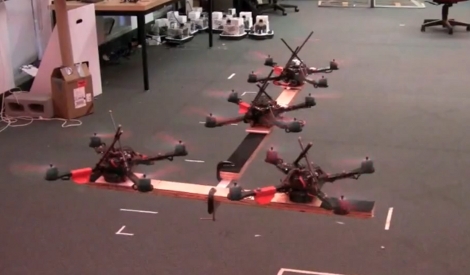[youtube=http://www.youtube.com/watch?v=RTTgLYzfQrE]
[Tyler LaVite] tipped us off about the generator he built. He combined a 5.5 horsepower Honda motor with a 10 horsepower electric bandsaw motor. To get an induction generator to produce alternating current you must feed electricity into the system to start the magnetic flux. [Tyler’s] solution was to include a bank of capacitors totaling 230mF which charge from the motor, then release back into the system. It’s not as green as the syngas generators we’ve seen since it still uses fossil fuel, but it reuses old parts sending less to the landfill.













